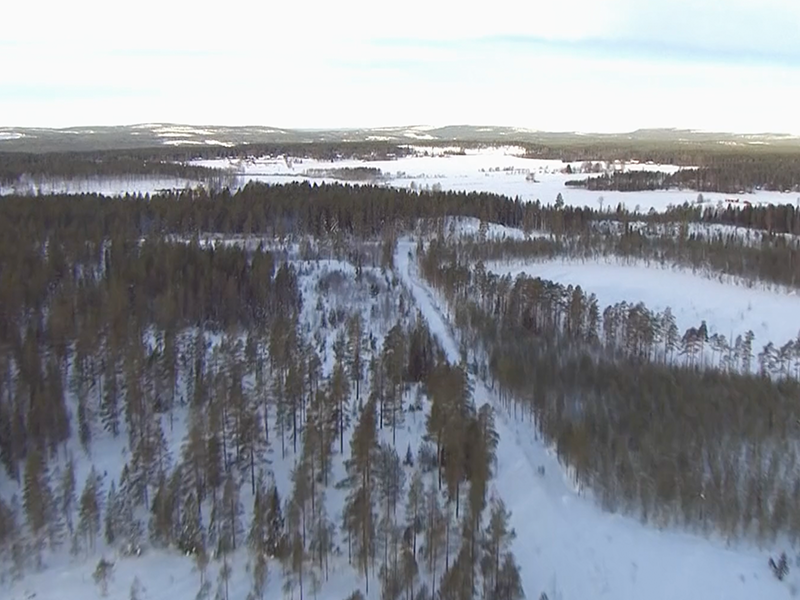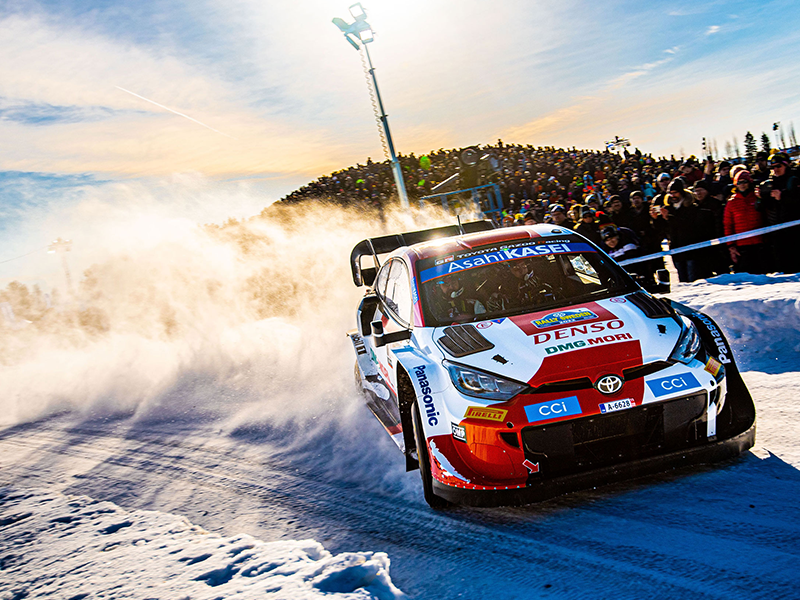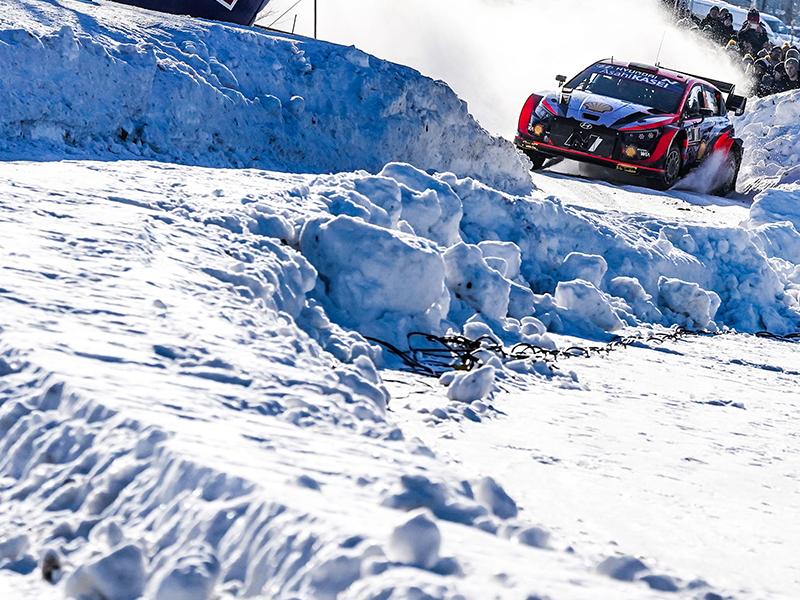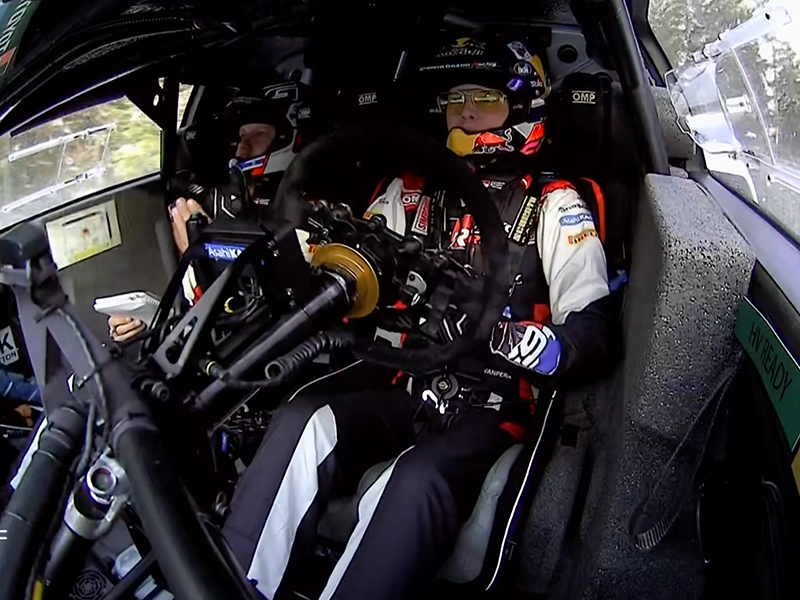WRC’s only fully-fledged winter rally
Two winter rallies exist in WRC. The opening round in Monte Carlo is tricky, with snow and ice appearing in the middle of the tarmac, while Round 2 Rally Sweden is the Championship’s only snow rally with its entire road surface covered by snow and ice.
Though studded tyres are used for both rallies, those used for the icy Swedish road surface are special. Narrow, with tungsten steel studs driven in, and with a maximum protrusion of 20 millimetres, they look like hedgehogs.
Traditionally, the event has been held around Karlstad near Stockholm. As Scandinavia has been having less snow due to the continuously mild winters, it was decided that the rally this year would be held in Umeå, about 600 km north, just short of the Arctic Circle.

Absence of two championship leaders
The heated opening round was dominated by two champions, Sébastien Loeb and Sébastien Ogier, but the two are participating in the championship on a spot basis. For this reason, this round in Sweden was competed in by full-time drivers who aspire to become the WRC champions.
In addition to their regular drivers, Elfyn Evans and Kalle Rovanperä, this time Toyota used Scandinavian driver, Esapekka Lappi in place of Ogier for the first time in a long while. Hyundai’s line-up remained unchanged, and Ford had three entrants without Loeb.
On 24 February, as temperatures rose to nearly zero degrees Celsius, Rovanperä set the fastest time in the pre-rally shakedown, followed by Hyundai’s Ott Tänak and Thierry Neuville. Takamoto Katsuta finished in fourth place, and the Ford team followed suit.
Fortunately, the temperature dropped to minus 15 degrees Celsius, and the road surface, which had melted from the previous day’s rain refroze. Under this favourable condition, Day 1 of a full-blown battle began on the morning of the 25th.

A big scramble between Toyota and Hyundai
Day 1 on Friday covered 125 km including two runs of Kamsjön, the event’s longest at over 27km. In stages where snow remains on the road, the first runner is forced to clear the snow. Rovanperä, driving in the disadvantageous lead and hitting his bumper on the first stage, set the second fastest time behind Tänak who started later. On the following SS2, the longest stage of the event, Ford’s Breen got stuck in the snow bank, which red-flagged the stage and caused confusion. In the meantime, Toyota’s Lappi emerged on top of the pack with the fastest time. On SS3, Rovanperä bounced back from the disadvantage again to take the lead; thus, the three stages in the morning created a melee, with the leader changing twice.
The rally cars which returned to Umeå once serviced, then went back out on the road to repeat the same stages. On SS4 which was the same as SS1, this time, Toyota’s Evans recorded the fastest time to come out on top overall. On SS5, Tänak also closed in on Evans by 1.1 seconds.
However, before SS6, the hybrid unit of Tänak’s i20 had a problem. A warning signal on the hybrid rally car which was introduced this year was triggered and he had to stop the car. As the unit was supplied by Compact Dynamics, neither Hyundai nor Tänak was responsible for the issue. Tänak, who dropped out of the top spot, said “it was like a bad joke.”
Although the pressure was off for Evans with Tänak’s retirement, he lost time on SS6. On SS7, the last stage of Day 1, Neuville took the overnight lead. Despite Tänak’s misfortune, with the Estonian driver and then Neuville taking the lead, Hyundai showed its speed in a reversal from the poor performance in Monte Carlo. The Toyota troops: Rovanperä, Evans, and Lappi followed suit.

Achieving a two-generation win by out-distancing the rest
Competition for first place continued on Day 2. For Rovanperä, who joined in contention for the top place despite his unfavourable running order on Day 1, it was now time to show his true colours. After Rovanperä came out on top on SS8, the first stage of the day, Evans moved up to second place on SS10. On SS11, Craig Breen recorded Ford’s fastest ever time, and Lappi moved up to third place; thus, Toyota occupied the top three places. After the service at Umeå in the afternoon loop, Evans closed in on the lead, but towards the end of Day 2, Rovanperä pulled away from the rest by setting the fastest times consecutively. Furthermore, on the last stage of the day, Rovanperä gained a huge advantage as Evans ran off the course, incurring a 10-second penalty.
With a lead of more than 20 seconds over the rest of the pack on the final Day 3, no drivers were able to threaten Rovanperä. 21 years after his father, Harri Rovanperä swept the Swedish rally in 2001, he repeated the feat. This was the second father-son victory after the Toivonens who won the Monte Carlo rallies in 1966 and 1985.
With this success, Rovanperä becomes the leader of the drivers’ championship, followed by Hyundai’s Neuville who took second this round. Now after the opening two rounds, where the cars of the three WRC manufacturers have proved to be close in performance, the next championship will be held in Croatia in April. It will be a tarmac rally which will reveal the difference in the power of the cars. It will be an interesting competition to watch and see which teams are able to squeeze the most power effectively out of their hybrid units.

 Mobility-related information website
Mobility-related information website




